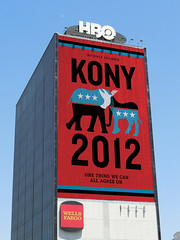Kony 2012 is a Lesson in Viral Video Marketing
Last week, the charity Invisible Children unleashed their viral video, Kony 2012. If you haven’t yet seen the 30-minute documentary, you’ve probably at least heard of it by now: so far, the video has received over 74 million hits on YouTube and has raised over $5 million.
While all this unprecedented attention has garnered some criticism (which you can read all about in the National Post) a couple of things are clear:
- Video connects on an emotional level
- Video moves people to action
- Video is easy to share
- Video is an increasingly effective way to broadcast a message
- Video is a powerful sales tool
Invisible Children is reportedly planning on releasing a 10-minute follow-up video on Monday, to address the criticisms and concerns raised by the first video. Agree or disagree, count on the world to be watching and the discussion to be heated. Either way, mission accomplished: Kony is famous.

i always look forward to your posts, nishi.
this one hits home at multiple levels…
Your support means a lot! TY!
Nishi, this is a great example of how people are interested in righting wrongs in our society and yes the power of social media via video. What I don’t get is the critism. Would you critisize a parent pulling a child away from the hot stove? Would you say your hand placement was wrong, you tugged too hard, your timing was off? I don’t think so. The adult is more conscious, sees the danger and must act quickly. So too is the case with Invisible Children. They see the danger and are galvanizing people to act. Hats off to you.
The criticism did catch me by surprise, to be honest. Especially the comments I saw on social media that said “What about the children here in North America, we should help them first… etc.” As if you can only help children from one nation at a time. A child in trouble is a child in trouble. There’s also all the political stuff, which I don’t want to get into at this point… but I’ll be watching out for that response video from Invisible Children; very curious about what they have to say. Thanks for reading and commenting!!